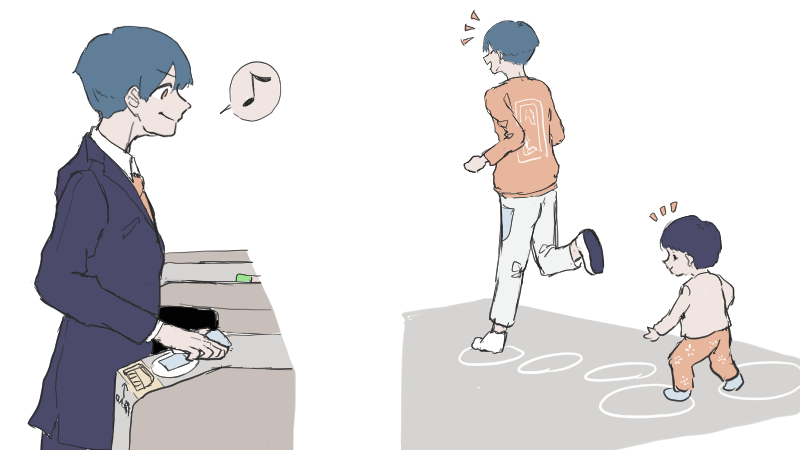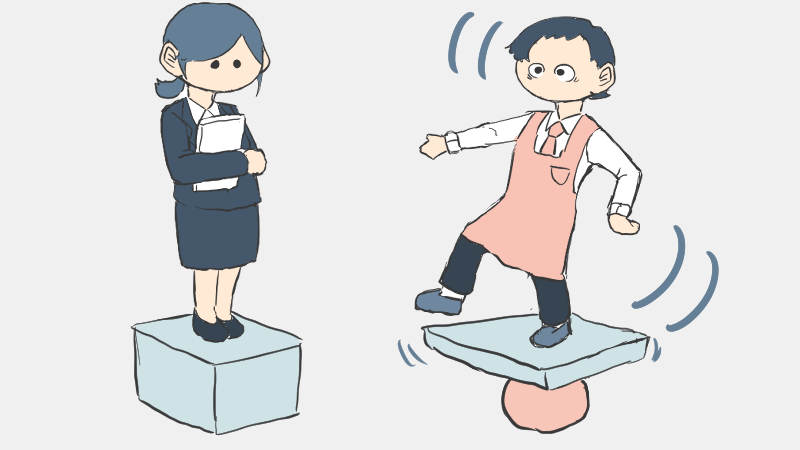Reform of working styles
On April 1, 2019, the Law Concerning the Reform of Working Styles was enacted and partially enforced, and the introduction of "Reform of working styles" has been promoted mainly by large companies.
Purpose of Working Style Reform
Reform of working styles is positioned as the greatest challenge for realizing "100 million. All-active society".
*100 million. All-active society
In this age of aging society with a declining birthrate, the Japanese government set the goal that population will remain at 100 million in 50 years, and everyone will be able to play an active role in the workplace, home and community.
Japan today faces a variety of social problems, including "Decline in working-age population due to the declining birthrate and aging population" and "Diversification of work styles by balancing work with childcare and nursing care".
Under these circumstances, it is an important issue for the development of society to improve the level of satisfaction of workers by improving productivity through investment and innovation, increasing motivation to work, expanding employment opportunities, and creating a working environment where workers can make the most of their abilities.
In order to solve these problems, the way of working reform aims to realize a society in which various ways of working are possible according to the individual circumstances of each worker, and to increase productivity by enabling motivated workers to work comfortably and flexibly.

Background to the Promotion of Work Style Reform
100 million The reform of working styles aimed at achieving a society in which everyone can play an active role is being promoted against the background that the number of "working-age population (Mainstay labor force, 15 ~ 64 years old)" is decreasing at a pace faster than the government had expected. If the working-age population continues to decline, the labor shortage will become more serious, which may lead to a decline in productivity and national power. The government is determined to resolve the labor shortage through "increase in the number of workers" "rising birth rate" and "improvement of labor productivity". The outline of the work style reform is to tackle the three goals mentioned above.
Pillars of Work Style Reform
In order to achieve the outline of the work style reform ("improvement of labor productivity" "rising birth rate" "increase in the number of workers") mentioned in "Background to the Promotion of Work Style Reform"
・Elimination of long working hours (Introduction of restrictions on overtime work)
・Correcting the Difference between Regular and Non-Regular Workers (equal pay for equal work)
・Employment promotion for the elderly (reemployment)
is the main challenge.
In particular, the "Correcting the Difference between Regular and Non-Regular Workers (equal pay for equal work)" aims to improve the difference in treatment between non-regular and regular workers.
*equal pay for equal work
The idea is to correct the wage and treatment gap between regular and fixed-term employees who work in the same company.
The wages of non-regular workers, such as part-time and part-time workers, which account for about 40% of all workers, are said to be only about 60% of the hourly wages of regular workers. As part of its efforts to reform the way people work, the government has raised the wages of non-regular workers to about 80% of those of regular employees (Same level as Europe and America), thereby improving the productivity of non-regular workers.
We, high school students cannot say that this is someone else's problem because it could be a great opportunity for us to improve their working conditions.

Part-Time Fixed Term Employment Act
As a result of the enactment of laws related to the reform of working styles, the "part-time labour law" was revised to "Part-Time Fixed Term Employment Act" and will come into effect on April 1, 2020. (Effective April 1, 2021 for SMEs)
The amendment to this law is characterized by the fact that fixed-term workers such as part-time workers, part-time workers, contract workers, and temporary workers are also subject to the law. It prohibits unreasonable differences in all treatment, including basic pay, bonuses, welfare benefits, and various allowances, between regular employees working in the same company and fixed-term workers.
Items for which differences in treatment are prohibited
・base salary
・Bonus
・Allowance (Job allowance, work allowance, commuting allowance, family Benefits and Training (Welfare facilities, congratulations and condolences leave, sick leave, etc.)
In addition, the amendment to the law clarifies the criteria for "provision for balanced treatment" which is stipulated as a measure to ensure equal and balanced treatment in accordance with differences in working styles between regular employees and fixed-term workers, and the "Provisions on Equal Treatment" is also applied to fixed-term workers.
Based on this law, the "Guidelines for Equal Wages for Equal Work" was established to achieve equal pay for equal work, which is one of the pillars of the work style reform. The Guidelines for Equal Wages for Equal Work provide principles and specific examples for determining "What disparities (difference in treatment) are unreasonable and what disparities are not unreasonable".
AI is good at computation and memory, so it's good for patterned work.
complex tasks are still only available to humans, and there will be new jobs in AI management.